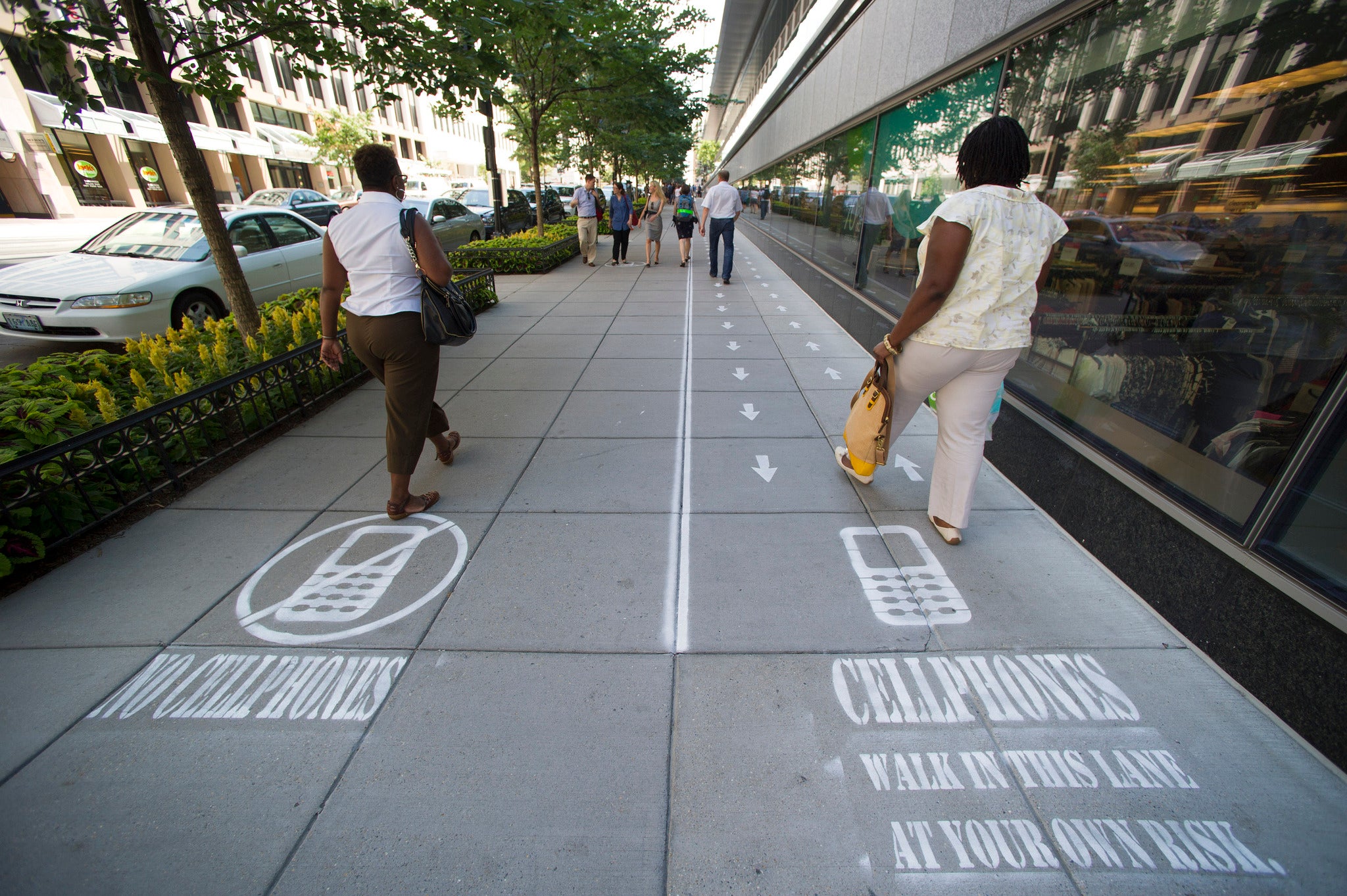No walkie talkie: 'Experiment' tries separating pedestrians depending on phone use
Could the 'cellphone' and 'no cellphone' lanes work in the UK?

Perpetually incensed by people’s lack of awareness when they’re walking and texting?
Steam slowly emanate from your burning hot ears as a pedestrian just suddenly stops in front of you, for no apparent purpose whatsoever?
If so, you’re either a Londoner or this nifty walkway design, pictured yesterday, is just for you.
Etched on the pavement in Washington DC by National Geographic Channel, the temporary instructions are possibly a much-needed, brilliant idea.
Forget that the stencilled signs are a stunt for the broadcaster – for a behavioural science experiment – this oh-so-simple method of splitting the walkers and the talkers into three lanes of ‘traffic’ is pure genius.
Why not chalk on a fourth and fifth lane, dedicated to shoppers who’ve loaded up with nine bulbous sales bags each?
The pavement marks ran for about a block, not only splitting mobile phones users from those who don’t count their phone as an appendage but also sub-dividing up those who do choose to be on the phone.
Perhaps the ‘no cellphones’ lane doesn’t need sub-dividing because its users are more alert and considerate of one another?
BBC journalist Mark Easton said today: “The British are ambulatory anarchists.
“[We] have little sense of pavement etiquette, preferring a slalom approach to pedestrian progress.
“When two strangers approach each other, it often results in the performance of a little gavotte as they double-guess in which direction the other will turn.”
And as he suggests, the zig-zagging from one side of the pavement to the other, as we attempt a disjointed waltz, could have been nipped in the bud if only anyone had read the government’s ‘general guidance on walking.’
“Where possible, avoid being next to the kerb with your back to the traffic,” it states. Who knew?
The proposal for segregated pedestrian lanes isn’t new, though the reason for them might be.
As Mr Easton mentions, in 2000 campaigners tried to establish a fast lane for pedestrians on Oxford Street for those who just wanted to get from A to B without bulldozing into a tourist. They were laughed of the kerb.
However, 14 years ago mobile use was at a fraction of what it is now. With discourteousness on the pavements now at a near epidemic, perhaps National Geographic is on the right track.
Subscribe to Independent Premium to bookmark this article
Want to bookmark your favourite articles and stories to read or reference later? Start your Independent Premium subscription today.

Join our commenting forum
Join thought-provoking conversations, follow other Independent readers and see their replies